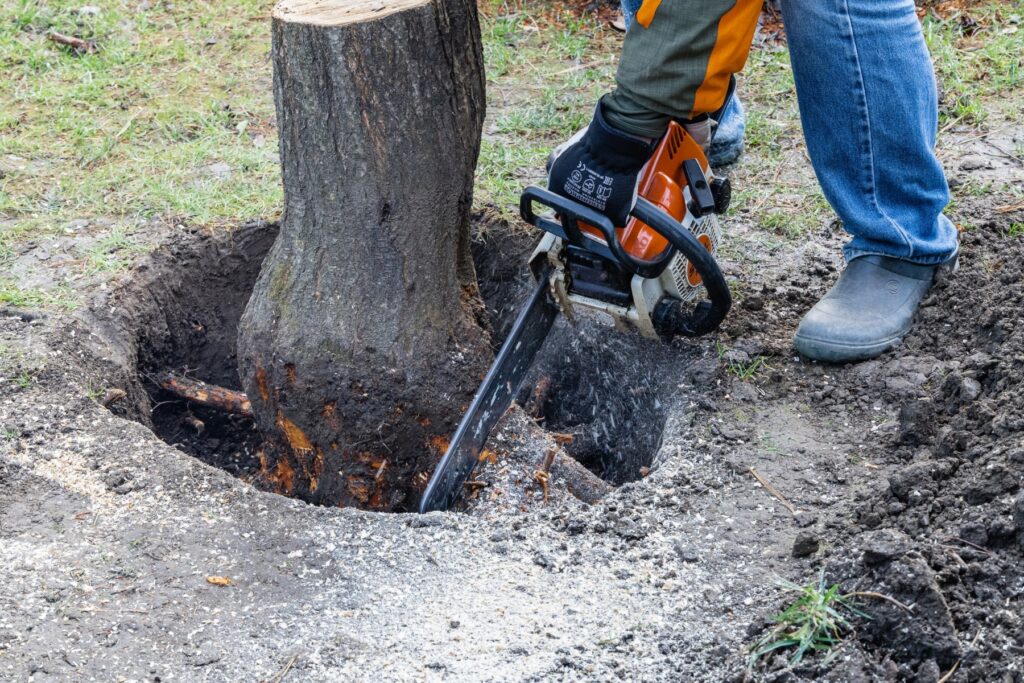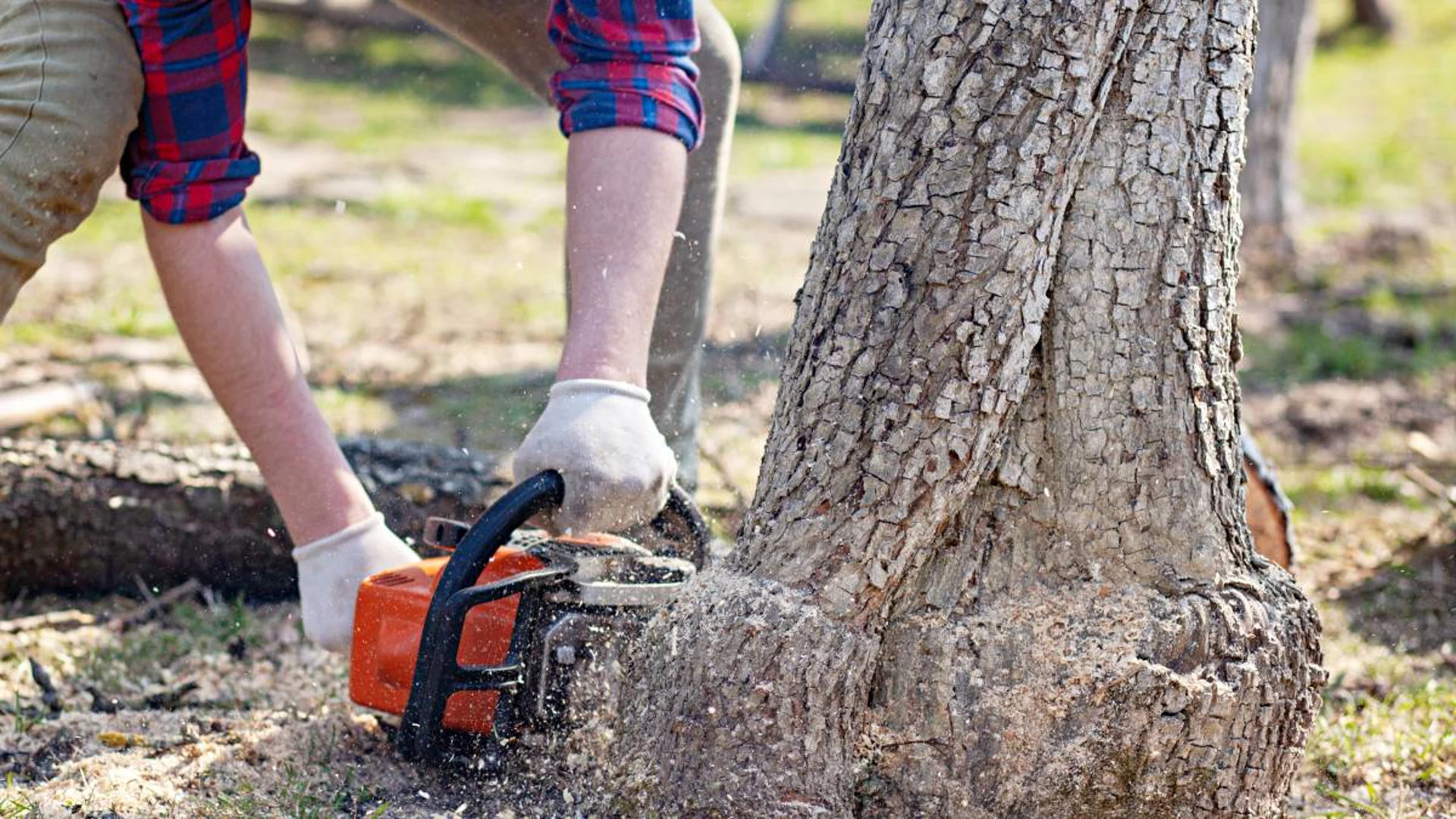How Stump Removal Costs Reflect Our Economic Value of the Urban Forest
What Is Stump Removal and Why Is It Relevant in Urban Forestry?
Stump removal is the process of extracting the remaining tree base and root system after a tree has been felled. This procedure eliminates potential safety hazards, prevents pest infestations, and clears space for new plantings or development projects.
In urban forestry, stump removal serves as a critical maintenance activity that directly impacts the health and functionality of city green spaces. When stumps remain in place, they create tripping hazards for pedestrians, harbour diseases that can spread to nearby trees, and occupy valuable land that could support new vegetation or infrastructure. The decision to remove stumps reflects how cities prioritise the long-term vitality of their urban forest over short-term cost savings.
The financial implications of stump removal vary considerably based on several factors:
- Stump size and species – Larger stumps with extensive root systems require more labour and equipment
- Location accessibility – Stumps in confined urban spaces demand specialised machinery
- Disposal requirements – Grinding, chemical treatment, or complete extraction each carry different price points
These costs typically range from £60 to £350 per stump in UK cities, representing a substantial line item in municipal forestry budgets. Understanding how stump removal cost reflect our economic value of the urban forest requires examining these expenses as investments in sustainable urban ecosystems rather than mere maintenance obligations.

How Do Urban Forests Benefit Cities Economically?
Urban forests generate substantial economic value through direct financial returns and cost savings that strengthen municipal budgets and private wealth. Trees within city boundaries function as green assets that appreciate over time, delivering measurable returns on investment.
Increase in Property Values
Property values rise significantly in neighbourhoods with mature tree canopy. Research demonstrates that homes near well-maintained urban forests command prices 3-7% higher than comparable properties in areas with sparse vegetation. Estate agents consistently report that buyers prioritise tree-lined streets and leafy gardens, translating aesthetic preferences into tangible market premiums. A single mature street tree can add £10,000-£15,000 to residential property valuations. This is further supported by studies such as the Corvallis Urban Tree Assessment, which highlight the positive impact of urban trees on property values.
Energy Savings
Energy savings represent another critical urban forest benefit. Strategic tree placement reduces cooling costs by 15-35% during summer months through shade provision, whilst windbreaks lower heating expenses in winter. These reductions appear directly on utility bills for homeowners and businesses, creating cumulative savings across entire districts. Commercial properties particularly benefit, with reduced operational costs improving profit margins and tenant satisfaction.
Stormwater Management Services
Stormwater management services provided by urban trees prevent costly infrastructure damage. Tree canopies intercept rainfall, whilst root systems absorb runoff that would otherwise overwhelm drainage systems. Cities avoid millions in flood damage repairs and sewer upgrades by maintaining robust urban forests. Philadelphia’s green infrastructure programme, which includes extensive tree planting, saves the city an estimated £2.3 billion in stormwater management costs over 40 years.
Boosting Tourism and Recreation
Tourism and recreation sectors gain from attractive urban forests. Parks with mature trees draw visitors who spend money at local businesses, generating tax revenue and employment. Cities with renowned urban forests—such as Vancouver’s Stanley Park or London’s Hyde Park—leverage their green spaces as marketing assets that enhance destination appeal and extend visitor stays.
Healthcare Cost Reductions
Healthcare cost reductions emerge from improved air quality and mental health benefits associated with urban tree cover, though these savings often remain undervalued in traditional economic assessments. Such benefits are part of a broader urban forest strategy that cities can implement to maximize their economic potential while also enhancing environmental sustainability.
Why Are Stump Removal Costs a Key Consideration in Urban Forest Management?
Stump removal costs are extremely important in municipal budgets because they directly affect the financial sustainability of urban forest management programmes. City planners must include these costs when calculating the true expense of maintaining tree canopy coverage. If stumps are left unattended, they can create safety hazards, harbour pests and diseases, and hinder optimal land use in densely populated areas.
Ongoing Costs Related to Stump Removal
The financial burden of stump removal goes beyond just the immediate extraction process. Municipal authorities also have to deal with ongoing costs such as:
- Equipment rental or purchase for grinding machinery
- Labour expenses for trained arborists and operators
- Disposal fees for wood chips and debris
- Site restoration and replanting investments
- Liability insurance to cover potential property damage
Budget allocation decisions depend on understanding these costs within the larger context of urban forest management. When policymakers underestimate stump removal expenses, they risk using up funds needed for proactive tree care, leading to a reactive management approach that ends up being more expensive in the long run.
Importance of Accurate Cost Projections
Accurate cost projections are crucial for strategic planning when it comes to tree succession. As urban forests age, there will be more removals, which means there will be predictable increases in stump removal demands. Cities that include these costs into their multi-year financial models can set up dedicated reserve funds, avoiding budget shortfalls that could affect other important forestry services.
The connection between stump removal costs and urban forest management becomes especially clear when we look at infrastructure conflicts. Tree roots and stumps located near pavements, utilities, and buildings need to be removed carefully to avoid damage claims that would be much larger than the initial extraction cost. By budgeting properly for these interventions, we can protect both public assets and the municipality’s financial health while still making room for future plantings that support canopy goals.
What Role Do Maintenance Expenses Play in Determining the Overall Economic Value of Urban Forests?
Maintenance expenses are the baseline measurement against which all urban forest benefits must be evaluated. City budgets allocate funds for tree care, pest control, pruning, watering, and fertilising—costs that directly reduce the net economic value of urban forests. When these maintenance costs exceed the quantifiable benefits trees provide, municipalities face difficult decisions about resource allocation.
The economic assessment framework treats maintenance expenses as ongoing investments rather than simple expenditures. Each pound spent on preventative tree care generates returns through extended tree lifespans, reduced emergency removals, and minimised infrastructure damage. A well-maintained tree canopy delivers consistent energy savings, stormwater management, and air quality improvements that compound over decades.
How Stump Removal Costs Reflect Our Economic Value of the Urban Forest becomes evident when examining the full lifecycle accounting. Maintenance costs include:
- Routine inspections and health assessments
- Seasonal pruning and structural support
- Pest and disease monitoring and treatment
- Irrigation during drought periods
- Root management near pavements and utilities
- Emergency response for storm damage
- Stump grinding and site restoration
These expenses create a transparent ledger that policymakers use to justify urban forestry programmes. When communities document that £1 invested in tree maintenance returns £2-5 in ecosystem services, the economic value of urban forests becomes defensible in budget negotiations.
The relationship between maintenance costs and forest value also reveals efficiency opportunities. Cities that implement proactive care schedules reduce long-term expenses by preventing tree failures, extending productive lifespans, and avoiding costly emergency interventions. This cost-benefit analysis transforms urban forestry from a discretionary amenity into a strategic infrastructure investment with measurable returns.
How Do Intangible Values Affect Public Willingness to Invest in Urban Tree Care Initiatives?
Intangible values drive community support for urban tree care far beyond spreadsheet calculations. Residents often champion funding for stump removal and tree maintenance because of emotional connections to neighbourhood greenery, childhood memories under specific trees, or the sense of identity that mature canopies provide to their streets.
Cultural Significance
Cultural significance transforms trees from mere assets into community landmarks. Heritage trees that witnessed historical events or served as gathering places for generations create powerful advocacy groups willing to support municipal budgets for their preservation. When cities propose stump removal near culturally important sites, public investment in urban tree care frequently increases as communities mobilise to protect or replace these symbolic features.
Aesthetic Appeal
Aesthetic appeal directly correlates with funding approval rates for tree care programmes. Neighbourhoods with visually striking tree-lined avenues consistently demonstrate higher voter support for forestry budgets compared to areas with sparse canopy cover. The visible beauty of well-maintained urban forests creates a psychological value that residents translate into tangible financial commitments through:
- Voluntary contributions to tree planting funds
- Support for increased property taxes dedicated to forestry
- Private expenditure on professional stump removal services
- Participation in community tree care volunteer programmes
Research indicates that the aesthetic value of trees significantly influences public willingness to invest in urban forestry.
Personal Attachment
Personal attachment influences individual property owners’ decisions about stump removal costs. Homeowners regularly spend beyond economically rational amounts to preserve or properly remove trees tied to family milestones, demonstrating how intangible values override pure cost-benefit analyses. This emotional investment extends to collective action, where communities pressure councils to allocate resources for comprehensive tree management that includes professional stump removal rather than cheaper alternatives that compromise neighbourhood character.
In summary, the intangible values associated with urban trees—be it cultural significance, aesthetic appeal, or personal attachment—play a crucial role in shaping public willingness to invest in urban tree care initiatives. This underscores the importance of recognizing and leveraging these values in planning and policy-making processes related to urban forestry.
How Does Stump Removal Fit into Broader Investments in Green Infrastructure Within Cities?
Stump removal is a crucial part of comprehensive green infrastructure investment. It creates space for new plantings and ensures the long-term health of urban forest networks. When cities allocate funds for stump grinding and extraction, they show their commitment to maintaining functional green corridors that provide measurable environmental benefits.
Understanding Green Infrastructure Investment
Green infrastructure investment includes interconnected systems of parks, street trees, bioswales, and vegetated spaces that manage stormwater, reduce urban heat islands, and improve air quality. These elements work together to create a sustainable and resilient urban environment.
The Importance of Stump Removal
Removing stumps is essential for several reasons:
- Preventing Hazards: Decaying stumps can pose hazards to pedestrians and vehicles. By removing them, cities ensure public safety.
- Enabling Replanting: Stump removal allows for strategic replanting efforts that strengthen ecological networks. This means replacing old or dying trees with new ones in carefully selected locations.
- Addressing Maintenance Liabilities: Vacant stump sites represent both a maintenance liability (cost of keeping them) and an opportunity (potential for enhancing canopy coverage).
The Financial Logic Behind Stump Removal
When examining costs over time, the financial benefits become clear:
- Municipalities spending £200-£500 per stump removal create conditions for young trees worth thousands of pounds in future ecosystem services.
- These replacement trees integrate into various systems such as stormwater management, urban cooling networks, biodiversity corridors, and carbon sequestration programmes.
Cities like Melbourne and Portland have recognised this connection by including stump removal protocols within their green infrastructure master plans. They understand that neglected stumps hinder effective spatial planning necessary for achieving tree canopy goals.
Treating Costs as Investments
Instead of viewing removal costs as isolated expenses, these cities treat them as preparatory investments enabling future environmental returns. This shift in perspective allows for better budgeting and resource allocation towards long-term sustainability goals.
Protecting Existing Green Infrastructure Assets
The relationship between stump removal and green infrastructure goes beyond simple replacement:
- Professional stump removal prevents root diseases from spreading to nearby trees, safeguarding existing assets.
- Grinding stumps into mulch provides organic material for soil improvement, reducing reliance on purchased inputs while enhancing growing conditions for surrounding vegetation.
This circular approach maximises value from every maintenance dollar spent, aligning immediate costs with broader ecological objectives benefiting entire urban populations.

Conclusion
How do stump removal costs demonstrate our commitment to urban forest sustainability? They represent a tangible investment in maintaining the health, safety, and functionality of our urban green spaces. When cities budget for stump removal alongside tree planting and maintenance, they acknowledge that comprehensive care—not just initial installation—determines the true economic value of urban forests.
The connection between stump removal costs and urban forest value reveals several critical insights:
- Maintenance expenses reflect long-term thinking rather than short-sighted cost-cutting that compromises future benefits
- Safety investments protect both people and property, reducing liability whilst preserving community trust in urban forestry programmes
- Removal costs enable regeneration, creating space for new plantings that will deliver decades of ecosystem services
Understanding how stump removal costs reflect our economic value of the urban forest empowers city planners, policymakers, and residents to make informed decisions. The expenses associated with removing stumps aren’t merely operational costs—they’re strategic investments in environmental assets that deliver measurable returns through improved air quality, increased property values, and enhanced community wellbeing.
Ready to invest in your urban forest? Contact your local council or urban forestry department to learn how comprehensive tree management strategies, including professional stump removal, can maximise the economic and environmental benefits for your community whilst ensuring urban forest sustainability for generations to come.
Learn about: Urban Ecology and Tree Lopping in Sydney: Balancing Growth and Greenery
FAQs
Stump removal is the process of extracting a tree’s base and roots after felling. It prevents safety hazards, pest infestations, and frees space for new plantings or urban development.
Costs depend on stump size, species, location accessibility, and disposal methods. Prices typically range from £60 to £350 per stump in UK cities, reflecting investments in urban forest sustainability.
Urban forests increase property values, reduce energy costs, manage stormwater, boost tourism and recreation, and lower healthcare expenses by improving air quality and mental wellbeing.
Removing stumps ensures public safety, prevents disease spread, and allows optimal land use. Accurate budgeting prevents reactive maintenance costs and supports long-term canopy management.
Routine inspections, pruning, pest control, irrigation, and stump removal are investments that extend tree lifespans, reduce emergencies, and maximize returns from ecosystem services.
Cultural significance, aesthetic appeal, and personal attachment drive community investment in tree care, including stump removal, beyond purely financial considerations.
Stump removal enables safe replanting, prevents disease spread, and strengthens ecological networks within urban green infrastructure systems like parks, street trees, and stormwater management areas.
Spending on stump removal creates space for young trees that deliver future ecosystem services, integrate into cooling networks, and support biodiversity, making it a strategic investment rather than a simple expense.
Certified arborists prevent root diseases from spreading, safely grind or extract stumps, and provide mulch for soil improvement, enhancing conditions for surrounding vegetation.
Because it safeguards public safety, ensures ecosystem regeneration, increases property values, and maximizes the long-term economic and environmental benefits of urban forests.




